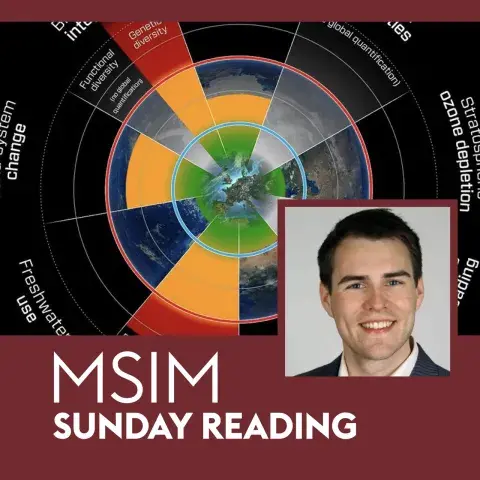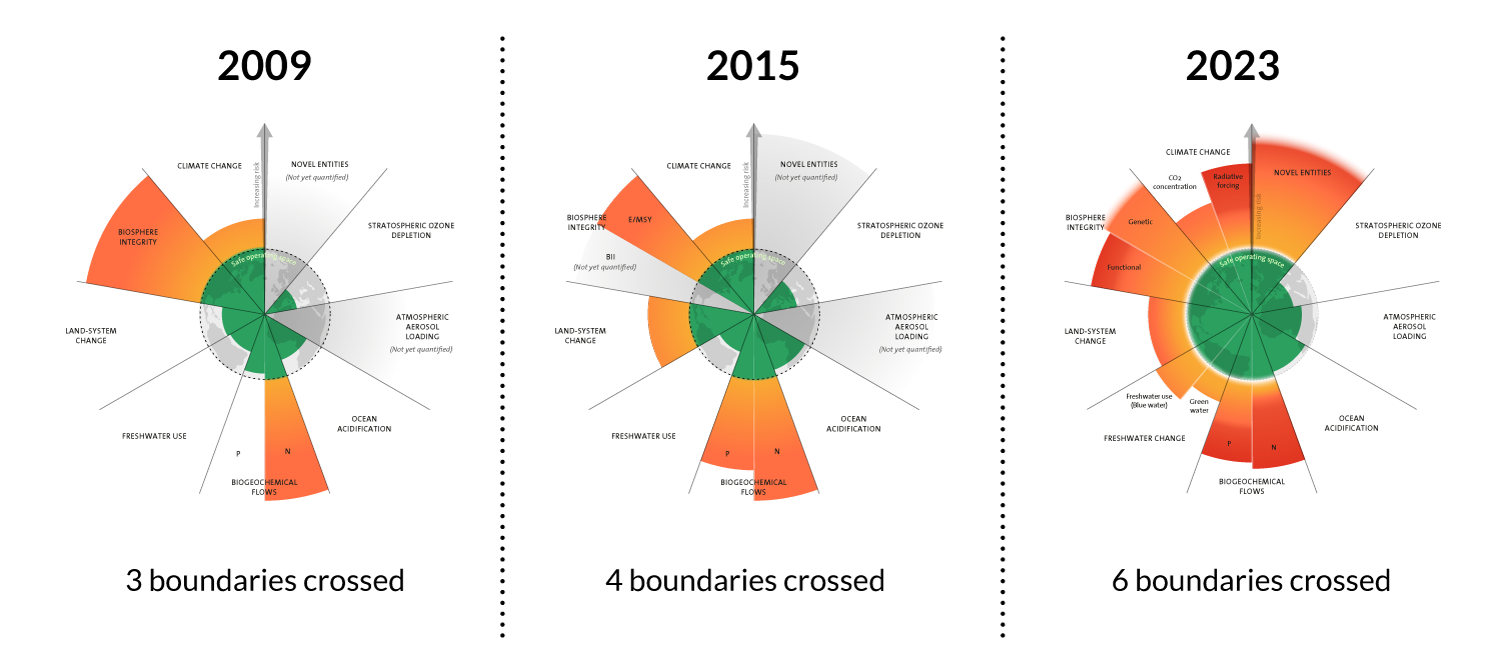
MSIM Sunday Reading is a weekly publication highlighting a current and relevant topic chosen by a professor of the Master of Science in International Management for their courses. The Franklin community gets an inside look at the coursework and specializations offered at MSIM and expert commentary on international issues affecting our world today. This week's MSIM Sunday Reading is in conversation with Mario Schultz, Assistant Professor of International Management at Franklin. His article addresses how nine planetary boundaries allow us to ponder corporate responsibilities as sustainability becomes increasingly formidable, a topic addressed in his Corporate Sustainability course.
Mario D. Schultz is an Assistant Professor of International Management at Franklin University Switzerland (FUS). Prior to joining FUS, Dr. Schultz worked as a postdoctoral researcher at the Università della Svizzera Italiana (USI). He studied Business Administration at the University of Vienna and Amsterdam. His primary research interest is Corporate Social Responsibility, Luxury Management, Business Ethics, Corporate Sustainability Management, and Information and Communication Technology. More specific research topics include: the ethical use of AI and algorithmic pricing, greenwashing and machine washing, sustainable luxury management, and new conceptualizations of corporate social/political responsibility in the digital age.
In our Corporate Sustainability (MGT 524) course, MSIM students learn how planetary boundaries, Greenpeace, and refrigerators help us rethink corporate responsibilities in light of global sustainability challenges. A few days ago, Science Advances published Richardson et al.’s latest assessment of the Planetary boundaries. The planetary boundaries framework identifies nine interconnected earth systems necessary to keep the planet in a stable and resilient “Holocene-like” condition (Richardson et al., 2023). Our Corporate Sustainability course takes up the latest research to reflect with students on corporate responsibilities in addressing macro sustainability challenges while balancing social, environmental, and economic interests.
Richardson et al. (2023) provide us with some crucial new insights.
For the first time, all nine planetary boundaries have been assessed:
- climate change
- biosphere integrity
- land system change
- freshwater change
- biochemical flows
- new entities
- ocean acidification
- atmospheric aerosol loading
- stratospheric ozone depletion

The evolution of the planetary boundaries framework. Licenced under CC BY-NC-ND 3.0. You are free to share — copy and redistribute the material in any medium or format. (Credit: Azote for Stockholm Resilience Centre, Stockholm University. Based on Richardson et al. 2023, Steffen et al. 2015, and Rockström et al. 2009)
The first six of the nine boundaries have been surpassed, with 7 and 8 getting closer to the edge. All boundaries’ transgression levels have increased, indicating that human activities increasingly risk the earth’s resilience. Johan Rockström, co-author of the study and researcher at the Stockholm Resilience Centre (2023), commented on the findings, saying that “[w]e don’t know how long we can keep transgressing these key boundaries before combined pressures lead to irreversible change and harm.”
Considering the new findings, it seems that the sustainability transition and its efforts to stabilize the earth’s systems are indeed running out of time. Nevertheless, the Stockholm Resilience Centre (2023) reminds us with a glimpse of hope that ozone depletion (nr. 09) was once successfully brought back to sustainable levels thanks to a global effort and sustainable entrepreneurship. Noteworthy in this regard is the invention of Greenfreeze, an ozone-safe hydrocarbon refrigerant that emerged thanks to Greenpeace’s corporate engagement in the early 1990s (Stafford and Hartman, 2013). Greenpeace partnered with the financially struggling Foron Household Appliances, a former East German company, to promote Greenfreeze. In an unusual step, Greenpeace made a sustainable investment, granting Foron $17,000 to implement Greenfreeze technology in ten prototype refrigerators to showcase technical viability (Stafford, Polonsky, and Hartman, 2000). To make a long story short, against intense initial backlash and industry skepticism, the ozone-safe Greenfreeze technology represents a de facto industry standard today. An estimated 80% of 2020 annual fridge production builds on the open-source technology that contributes to CO2 emission reductions while stabilizing the ozone (Greenpeace International, 2018).
Key takeaway: The better future managers understand the planetary environment of corporations and the interconnectedness of business, environment, and society, the more likely they are to engage and cooperate with societal stakeholders, exploring new and maybe unconventional strategies that can contribute to safeguarding the nine complex systems that facilitate a stable life on our planet.
Greenpeace International (2018). How Greenpeace changed an industry: 25 years of GreenFreeze to cool the planet. (n.d.). Retrieved September 25, 2023, from https://www.greenpeace.org/international/story/15323/how-greenpeace-changed-an-industry-25-years-of-greenfreeze-to-cool-the-planet/
Richardson et al. (2023). Earth beyond six of nine planetary boundaries. Sci. Adv. 9, eadh2458. DOI:10.1126/sciadv.adh2458
Stafford, E. R., & Hartman, C. L. (2013). NGO-Initiated Sustainable Entrepreneurship and Social Partnerships: Greenpeace's “Solutions” campaign for natural refrigerants in North America. In Social Partnerships and Responsible Business (pp. 164-190). Routledge. DOI: 10.4324/9781315867175
Stafford, E. R., Polonsky, M. J., & Hartman, C. L. (2000). Environmental NGO–business collaboration and strategic bridging: A case analysis of the Greenpeace–Foron Alliance. Business Strategy and the Environment, 9(2), 122–135. https://doi.org/10.1002/(SICI)1099-0836(200003/04)9:2<122::AID-BSE232>3.0.CO;2-C
Stockholm Resilience Centre (2023). All planetary boundaries mapped out for the first time, six of nine crossed. Retrieved September 23, 2023, https://www.stockholmresilience.org/research/research-news/2023-09-13-all-planetary-boundaries-mapped-out-for-the-first-time-six-of-nine-crossed.html. Accessed 23 Sept. 2023.

